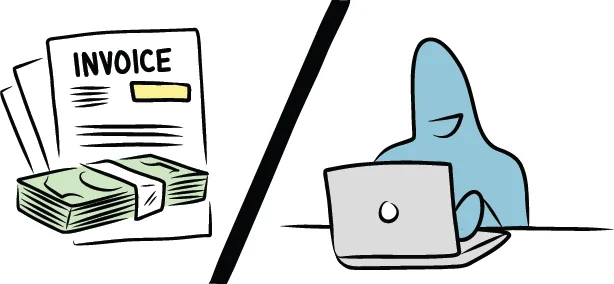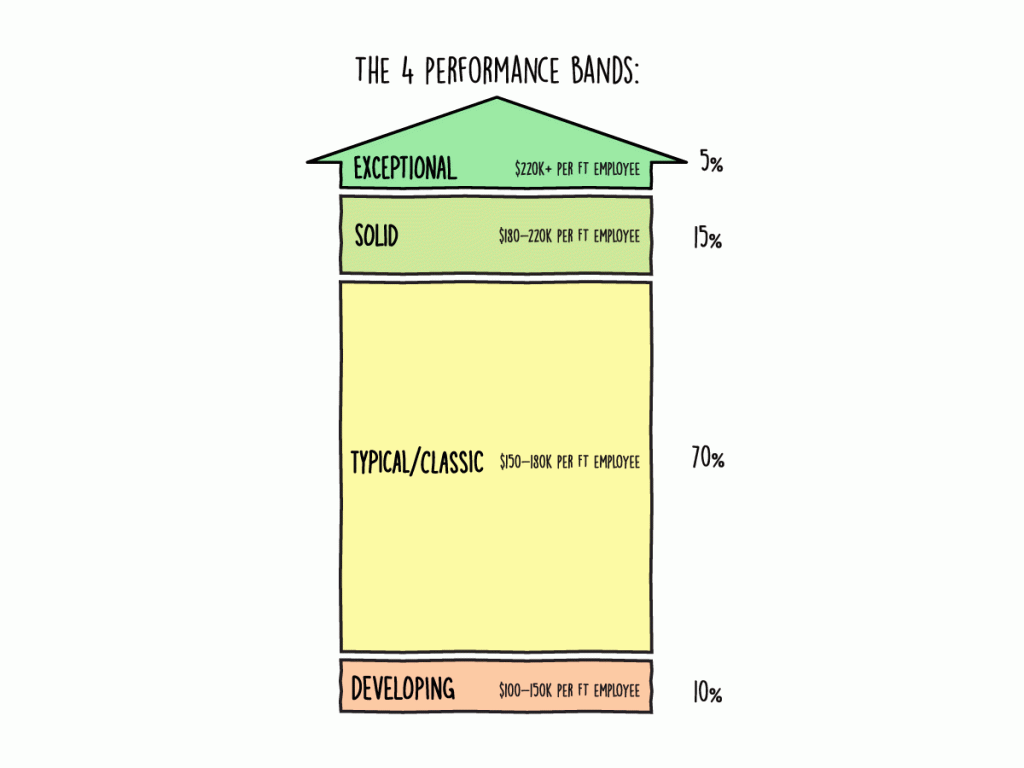Options for that Single Performance Benchmark to Watch
Written by

Few principals do a good job, at the outset, monitoring the firm's financial performance. You'll typically focus more on cash than profit, and only about one-fourth of you enjoying processing numbers, understanding their dependent relationships, and how pulling one lever might affect a different gauge.
I'm revising my "Financial Management of a Marketing Firm" book because quite a few things have changed in the field. It's still a very useful tome (and all previous buyers will qualify for a gratis update), but it's long—another word for boring—and a few numbers are out of date.
I tried to simplify that with this "Eight Gauges on Your Financial Dashboard" article four years ago, but I've spent hundreds of hours experimenting with an even simpler approach.
Even though I'd still like you to pick through all the options and design a dashboard with multiple gauges on it, specifically designed for you, it's easier to gather the troops and pull in one direction if you have one main thing that's sufficiently representative of your progress. If it is simple enough to calculate and understand, your progress will be less elusive.
Preview of the Winner: F/fte
To preview the final recommendation, that one metric that will usually do the trick is fee billings per full-time equivalent employee: "Billings/FTE". I'm going to shorten that to F/fte. Skip ahead if you don't want to hear about the other options, or pop over to this episode where Blair and I talk about it at length if you would prefer an audible, conversational discussion.
The Six Options
Here are the best options, with a simple overview of the pros and cons of each. These pros and cons are shared in the context of how useful they will be as a single metric to gather an entire team around. If there's a complicating factor, I'll share that.
- Net Profit. This is the most obvious one to choose. A hobby costs you money; a job delivers fair and predictable compensation; a business had better deliver profit. (Article on this.) Pro: it really is the bottom line. Con: there are some emotional challenges in highlighting something that only you, as the owner, will get. "Why should I work for his profit?" Also, all your decisions around overhead expenses are out of their control, and so they'll be fighting for something without sufficient impact. Complication: it's meaningless unless you normalize your compensation, first. Every dollar that you are underpaying yourself is a subsidized dollar of excess net profit.
- Owner Compensation. If your comp is set correctly, this is actually as or more significant than net profit. It's always there, even in a down year. Pro: It's what matters a lot to you. Con: you probably don't want to reveal this, right? Complication: It needs to be adjusted for multiple partners. The normalization process we use in the ReCourses Valuation Model applies a scaling penalty for multiple partners since there is little discernible advantage to the enterprise, financially.
- Utilization. this refers to the actual financial output of your firm. You determine this by multiplying five things together: average weighted hourly rate X full-time equivalent staff X average hours worked per week X average work weeks in a year X 60%. That reveals what you should be hitting at a bare minimum, expressed as 60% of all the time worked (not just the billable people). The average in the developed world is a very sad 42%, due to a severe combination of under-pricing and over-servicing. Calculate yours here. Pro: this calculation roles up a lot of important things, including the quality of the estimating, how well you capture change orders, the impact of your hourly rate, a bad ratio between billable and support staff, and many more. Con: it's difficult to calculate and explain, and it moves slowly. Typically you'll gain 1.5 percentage points per month. Complication: a lot of firms have people working extra hours in order to bill a certain amount. That's cheating, because it's 60% of everything and not 60% of an average week.
- Growth Rate. This is a measure of year over year increase, expressed as a percentage, in your fee billings. (Be sure you don't calculate this as an increase in your overall billings, which include pass-through expenses, like media, contractors, etc., because then it's meaningless.) Pro: Fits this stupid American notion of always having to grow or you start dying. Gets you on the even more silly Inc 5000 list. Con: It's an ego thing that can complicate your life as much as make it glorious. There are advantages in being bigger and being smaller, so make good choices. Complication: Invoicing boundaries (not cash received boundaries, since this is always an accrual calculation) can throw things off. You know, like when your client wants to clear out unused budget money every December, which means you haven't really done the work yet.
- Cash Cushion. Having cash is the surest way to prop up your own courage with new business choices or some new initiative that'll take a bit to pay off. Too much and you relax too much, but that's a problem that's difficult to complain about. Pro: It's really, really good for the business. Con: the more enlightened members of your team will love it if you are pickier, but most of them couldn't care less about the cushion that you own. Complication: Any loan to shareholders will mask a significant problem by hiding true liabilities.
- Fee Billings per Full-Time Equivalent Employee. Take your total revenue and subtract your cost of goods sold, which includes everything you purchase on the outside that is tied to a specific project. In other words, only the things that will stop if the client goes away. This will leave you your agency gross income. Divide that by all the people that work there, billable or not. So if there are 22 people and 3 half-timers, it's 23.5 people. The result is your F/fte. Pro: Really easy to calculate. Includes pretty much every other major component: hourly rate, accurate estimates, contained scope creep, utilization, and so on. Con: Someone might compare what they are earning to that number and not be an adult about it. Complication: If you're been growing or shrinking quickly, you'll need to calculate the average full-time equivalent count.
Drumroll: F/fte
In the recent episode I referenced above, you'll hear about "Performance Bands" for this number.

- $220,000+ is exceptional, and about 5% of firms hit this. This doesn't happen without package pricing.
- $180,000–$220,000 is solid, and 15% of firms fall in this range. This depends on great positioning and execution.
- $150,000–$180,000 is typical/classical, and 70% of firms sit here, often forever. They'll get stuck in the $155,000–$160,000 range. This takes great consulting and maybe coaching to rise above, because the next stage doesn't happen without some brain surgery.
- $100,000–$150,000 is developing, and the remaining 10% occupy this space. Lots of work to do, and the solutions are usually multifaceted. These folks usually hang around the wrong peers and don't have an informed perspective of what's possible, but some of them are going to kick your butt some day.
Caveats
First, these numbers are USD. I have clients in 37 countries, though, so you'll need to make an adjustment for local market realities. If most of your clients are in the US, it doesn't matter where your firm is. But if you're outside the US and have more local and regional clients, adjust them downward by 25-35% in western Europe, 15-25% downward in Canada, and 20-30% downward in Australia and New Zealand. In developing countries the adjustment can be 30-50% downward.
Second, these have to be calculated on an accrual (not cash- or tax-basis).
What I'd Suggest
So here's what I'd suggest you do with this, after running the appropriate calculations.
First, figure out what's happening at your firm and where the most improvement lies.
Second, decide which metric is most important in tracking your progress.
Third, design a spreadsheet. And it better be beautiful, too, or you're going to lose your Creative Credentials. I'd be especially proud if you'd over-design it and do some eye-tracking testing on it.
Fourth, explain it clearly to your leadership team. Then break them up in a small groups and do a Feynman Technique exercise until everyone is clear.
Fifth, have a company-wide gathering and do the same. Get their input on what might be dragging the metric down and what they would do to fix it.
Sixth, set some celebration goals to hit along the way and report them as you reach them and not monthly or quarterly.
Hope this helps!

